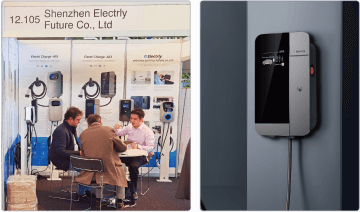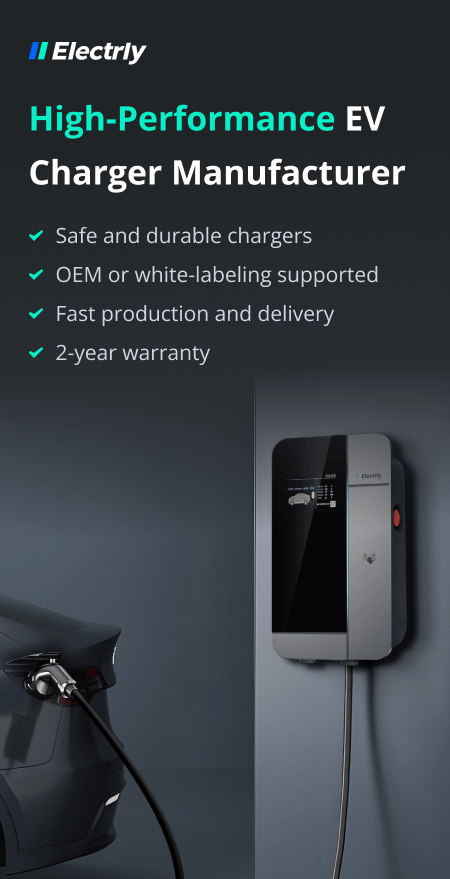If you are an electric vehicle (EV) owner or in the market for one, you may have already considered the advantages of utilizing solar panels to charge your EV. By doing so, you can reduce both your electricity costs and the impact that your vehicle has on the environment.
While solar panels can effectively charge your electric vehicle, it's important to consider certain factors. This article will explore how solar panels work, the benefits of charging an electric car with solar panels, and the key considerations you should keep in mind.
Understanding Solar Energy and Solar Panels
Using solar panels to power an electric vehicle can magnify the benefits of both. Before looking at how to charge an EV with solar, it is useful to understand how solar power systems work.
Solar energy refers to the radiant light and heat emitted by the sun, which can be captured and converted into solar power using photovoltaic (PV) cells.
These cells are made from semiconductor materials, such as silicon, and are arranged in solar panels installed on the rooftops of buildings and in large ground-mounted farms.
As sunlight hits a PV cell, it loosens electrons so that they can flow through the cell and produce electricity. The cells are made up of positively and negatively charged semiconductors that create an electric field, which drives the electrons toward the conductive metal plates lining the cell.
The amount of electricity produced by each cell is determined by the flow of this energy current. Solar cells can generate energy even on cloudy days, although they produce more power in direct sunlight.
The electricity generated by solar panels is in the form of direct current (DC), but most buildings use alternating current (AC). To convert the DC to AC, the electric current is directed through wires to an inverter.
The inverter converts the electricity from DC to AC and sends it to an electrical panel, also known as a breaker box, for distribution to buildings to power electrical devices.
Any unused electricity is sent to the electricity grid through the utility meter, which measures the flow of electricity from the grid to the property and vice versa.

Can You Charge Your Electric Vehicle with Solar Energy?
You can connect a solar PV panel system with an inverter to a regular EV charger, to charge the vehicle’s battery directly from solar power.
However, the amount of power a PV system generates depends on the time of year and the weather. On cloudy days or during winter when the days are shorter, you may need to supplement the power from the PV system with electricity from the grid to charge your EV to the level you require.
Even partially charging an EV with solar is a sustainable and cost-effective option, as it consumes fewer fossil fuels and requires less power from the grid.
Larger EV batteries typically need more PV panels to supply enough power for charging, so if you are looking to install a PV system specifically for charging your car, you should consult a professional to ensure you install the right system for your needs.
Benefits of Charging an EV with Solar at Home
Using a solar EV charger powered by a household PV system can save you time and money.
While EVs produce fewer carbon emissions than diesel or gasoline-fueled cars when on the road, charging the battery using electricity from coal-fired plants still produces emissions indirectly.
EV charging with solar further reduces their carbon footprint. A typical home PV installation can save around one ton of carbon per year, according to an estimate by the UK Energy Saving Trust.
Once it is installed, the lifespan of a well-maintained PV system is at least 25-30 years, providing a long-term solution to reducing your energy bills and the cost of EV charging.
Solar power systems typically work out cheaper over the long term than buying electricity from the power grid via a utility. Using an EV solar charger saves on fuel costs and gives you more control over your budget than driving a car fueled by gasoline or diesel, which is subject to fluctuating prices at the pump.
With a home solar power system, you also have the convenience of charging your EV at home at any time of day or night, without having to drive to a public charging station.
How to Charge Your EV with Solar
There are a few different options for using solar power to charge an EV.
- Install a home solar PV system and connect a Level 1 or 2 EV charger to run off your home electricity supply.
- Install a solar thermal system, which uses sunlight to heat water or air and can then heat the EV battery.
- Connect an EV charger to your home solar installation directly.
- If you need to charge your vehicle away from home, you can still charge it with solar energy by using a solar-powered public EV charging station. These stations are typically located in public places like gas stations and parking lots, providing convenient access for drivers who do not have access to a home solar EV charging station.
The Efficiency of EV Charging with Solar Panels
The charging efficiency of a typical electric vehicle battery depends on the ambient temperature, battery temperature, charge rate, length of the charging cable length, and the efficiency of the EV’s power conversion system from AC to DC. When charging a battery from a solar EV charger, there are additional factors that come into play.
Power Output of the Solar Panels
Standard residential rooftop solar panels typically produce around 250-400 watts per hour, while the average domestic PV system produces 1-4 kilowatts (kW). Each kW of rooftop solar capacity can produce around 4 kWh per day or 1,500 kilowatt hours (kWh) per year, depending on factors such as the location of the panels, season, and daily weather conditions.
To fully charge an EV with a 40 kWh battery, an average home PV system that produces an average of 1-4 kW of electricity will require an additional 3.1 kW system or 8-12 panels. This is based on an average vehicle traveling 14,000 miles per year, according to the US Federal Highway Administration. The average EV has a driving range of around three miles per kWh, so it will require around 4,666kWh of electricity.
How Long Does It Take to Charge an EV with Solar?
There are several factors that affect how long it takes to charge an EV with solar car charging stations. These include:
- the brand, make, and model of the vehicle
- the brand, level, and type of the charger
- the charging efficiency of the vehicle
- the size of the battery
- the battery level at the time of charging
- the power generated by the PV system
As the average home PV system can generate 1-4kW of electricity, it can fully charge an EV with a 40kWh battery in around eight hours.
A Level 1 home EV charging station typically charges at a maximum of 1.9kW, adding around five miles of driving range per hour, while a Level 2 charger can typically charge at a maximum of 19.2kW, adding around 25 miles of driving range per hour.
What to Consider Before Installing Solar Panels for Electric Car Charging
Before installing solar panels for electric car charging, there are several factors to consider. One important consideration is the size of your EV battery, which can range from 40kWh for a Nissan Leaf to 100 kWh for a Tesla Model S or Model X.
You will need to determine the number of solar panels you will need to power your EV charger to calculate the installation cost accordingly. If you already have a home solar PV system, you might need to add more panels to accommodate the increased electricity usage.
There are a few other factors you will also need to consider:
- How long it takes to receive approval to install new solar panels and how this fits with your EV charging needs;
- Whether you have enough rooftop space to install the solar panels you need;
- The cost of buying and installing a home charging system;
- Whether you also want to install a battery storage system to store excess solar energy and charge your vehicle overnight;
- Whether you can receive government subsidies for installing solar panels, battery storage, or an EV charger.
In addition to usage, you should also consider how much estimated daily sunlight your PV system will receive and local weather patterns.
Keep in mind that you will not often need to charge from a completely dead battery to full capacity. If you only drive a few miles a day, a few hours of charging will likely be enough to provide the range you need to run your EV.
Can Public EV Charging Stations Be Powered by Solar?
While some public charging infrastructures connected to the power grid use electricity that is generated from fossil fuels, there are public chargers that use electricity supplied by solar generation companies or on-site solar panels to provide clean energy for EVs.
Some charging stations have installed large solar canopies to shade vehicles from the elements while they charge. Solar canopies can also feed the clean electricity they generate back to the grid, further reducing their carbon footprint.
Public solar chargers also have the advantage of providing off-grid solutions to remote areas that may not be well-connected to the power grid, increasing EV adoption and promoting sustainable transportation options.
The Future of EVs & Solar Energy
The low-carbon energy transition is accelerating, driven by government policies on carbon emissions reduction and consumer preferences for environmental sustainability. Renewable energy, particularly solar power, is growing rapidly as a source of sustainable electricity generation that also reduces household energy bills and provides independence from centralized power grids.
Distributed solar power installations, such as household rooftop PV systems and EV charging stations with solar panels, have increased in popularity and grown exponentially in recent years. Increased availability of solar charging for electric vehicles paves the way for widespread adoption, providing homes and businesses with a clean source of electricity and low-cost charging.
Battery storage systems can maximize the benefits of PV systems by supplying clean electricity around the clock, allowing EV owners to charge their vehicles overnight.
Additionally, public solar-powered EV charging stations can provide off-grid solutions to meet the needs of drivers in different regions and communities, even when power grids are knocked offline by extreme weather and other conditions.
The future of solar power generation and storage is bright and the rise in drivers making the switch to EVs is increasing solar demand more than ever. Solar EV charging provides an affordable solution for environmentally conscious consumers to meet their needs for clean electricity.
FAQs
Why don't electric cars have solar panels?
That's because cars do not have enough space on the roof for installing solar panels to generate the amount of electricity needed to charge the battery.
How long does it take to charge an electric car with solar panels?
Charging an EV with solar panels can take eight hours or more, depending on the model of the vehicle, the size of the battery, the amount of direct sunlight, and the capacity of the solar PV system.
Can I charge my EV with portable solar panels?
Yes, it's possible to charge an electric vehicle with portable solar panels. However, it's important to keep in mind that portable solar panels may not generate enough power for a full charge, and charging times may be longer compared to using a home or public charging station.
It's crucial to ensure that the portable solar panels are compatible with your EV and that the charging process is safe and efficient.


